Blog
-
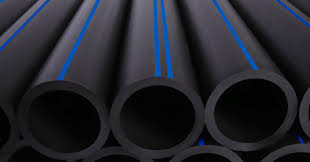
The Ultimate Guide to HDPE Pipe Classification HDPE PIPES
Buying industrial products requires extensive product knowledge. This is especially relevant for piping in commercial, industrial, or residential applications.Read more -

What’s the Difference Between HDPE Pipe and PE Pipe? HDPE PIPES
HDPE and PE pipes both serve similar functions, yet they differ in a few important ways. Here, we look at the differences between HDPE and PE pipe strength, service life, corrosion resistance, and more.Read more -

PPR PIPE FOR CHILLEDWATER AND FLUIDS
Toxic chemicals that come from our water supply is a threat to our health, but pipes and fittings made from PPR are harmless raw materials. Thus, it will not carry toxic substances that will affect the health of people drinking water from it. And it’s not only safe for our bodies, but it is also safe for the environment. Since they are non-toxic, any production or installation of the PPR piping system will not cause pollution.Overall, PPR pipes are safer and have more advantages than metal pipes which is why PPR is suitable for our drinking water. After all, we want our family to be safe and healthy at the same time.Read more -

What is High-Density Polyethylene? HDPE PIPES
High-density polyethylene, or HDPE, is a natural gas-derived thermoplastic known for its impressive tensile strength, corrosion resistance, and impact resistance. These traits make it the ideal material choice for piping in a wide range of applications including pressure and non-pressure pipe, conduit and drainage.Read more -
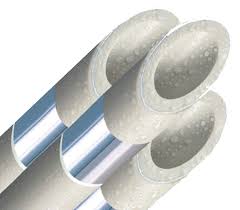
PPR pipe full form - What Does PPR Stand For?
PPR pipe is a great choice for a variety of applications, offering many great benefits such as durability, strength, and resistance to heat, impact, and corrosion. PPR pipes are also non-toxic, hygienic, and safe to use, making them a great choice for plumbing projects. It’s important to follow the best practices when installing PPR pipes, using the correct tools and fittings, and making sure to use PPR pipes fittings from a reliable supplier like Haili, a China PPR professional manufacturer, that already has many clients over the world. PPR pipes may be more expensive than PVC pipes, but they’re much more durable and long lasting, making them a great choice for long-term projects.Read more -
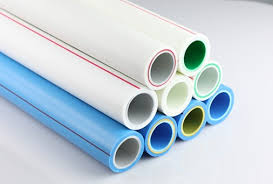 There are many types and features of pipes, which have an important place, especially in the construction sector. Although there are some changes in their properties, pipes in general are long lasting, durable and high quality products.HDPE Pipes: It is the right choice for pipe production and pipe applications with its high quality physical and chemical properties. It is a safe and durable pipe. It is a low cost and long lasting option. Corrosion does not occur and there is no rust microorganism formation. It can be used for approximately 50-100 years. Despite its flexible structure, it is also quite hard and highly resistant to friction. Convenient joining shape and upholstery are provided on request. It has no bad effect on the environment and is scarce in the energy used for its production. The costs of moving are inexpensive. It is reliable against events such as earthquakes. It is resistant to abrasion, friction, water and has a non easy rust features. Injection is a type of pipe suitable for many areas such as extrusion, powder coating, filming, rotary molding and electrical applications.Read more
There are many types and features of pipes, which have an important place, especially in the construction sector. Although there are some changes in their properties, pipes in general are long lasting, durable and high quality products.HDPE Pipes: It is the right choice for pipe production and pipe applications with its high quality physical and chemical properties. It is a safe and durable pipe. It is a low cost and long lasting option. Corrosion does not occur and there is no rust microorganism formation. It can be used for approximately 50-100 years. Despite its flexible structure, it is also quite hard and highly resistant to friction. Convenient joining shape and upholstery are provided on request. It has no bad effect on the environment and is scarce in the energy used for its production. The costs of moving are inexpensive. It is reliable against events such as earthquakes. It is resistant to abrasion, friction, water and has a non easy rust features. Injection is a type of pipe suitable for many areas such as extrusion, powder coating, filming, rotary molding and electrical applications.Read more -

Everything You Need to Know About How PPR-C Pipe is Manufactured
PPR-C pipe is an essential part of any building, whether it’s an apartment building, commercial structure, or even a home. PPR-C stands for polypropylene random copolymer, and this type of pipe is durable and able to withstand the elements, making it an ideal material to use in all kinds of construction projects. If you’re curious about how PPR pipe is manufactured and the manufacturing process, read on…Meanwhile, if you are looking for the best plumbing pipes company in India, you can reach out to us. KPT Pipes is among the top plumbing brands that provide high-quality plumbing solutions.Read more -
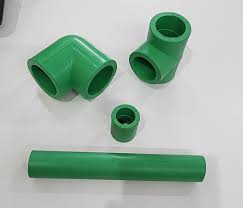
What is PPR antibacterial pipe?
The results showed that the antibacterial rate of PPR antibacterial tube to Escherichia coli and Staphylococcus aureus was 93.66% and 91.73% respectively in 20 minutes, and reached the level of foreign products after 24 hours.Shijiazhuang xingyin import and export trade Co., Ltd. is a manufacturer and supplier of PPR antibacterial pipes. Our products are of good quality and long service life. We are your first choice.Read more -

What Is The Difference Between PPH And PPR Pipes?
When it comes to choosing the right type of pipes for plumbing or HVAC applications, there are a few different options available, each with unique benefits and properties. Two popular types of plastic pipes that are widely used in construction and plumbing projects are PPH and PPR pipes. While both are made from different materials, they share some similarities and differences.Read more -
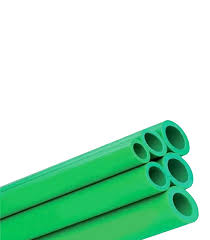 PPR pipes are pipes used for in-house water distribution. The raw material used for their production is called Polypropylene random copolymer, reason for the name PPR pipe. Polypropylene pipes according to DIN 8077 transport water of temperatures 10°C – 95°C, with the optimum temperature being 70oC. When produced using 1st grade raw materials, these pipes last for close to 50 years.Read more
PPR pipes are pipes used for in-house water distribution. The raw material used for their production is called Polypropylene random copolymer, reason for the name PPR pipe. Polypropylene pipes according to DIN 8077 transport water of temperatures 10°C – 95°C, with the optimum temperature being 70oC. When produced using 1st grade raw materials, these pipes last for close to 50 years.Read more -
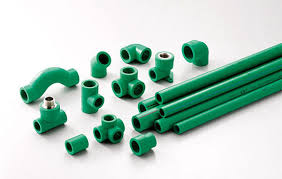
What is PPR (PPRC)? Where are PPR Pipes and Fittings Used?
Polypropylene (PP) is a thermoplastic polymer with a wide range of uses. It is obtained by polymerizing the monomer propylene. It is extremely resistant to acids and bases.Polypropylene shows very good resistance to fatigue. It is impact resistant. It has a low coefficient of friction, provides very good electrical insulation and has high chemical resistance.Read more -
 While PVC is the most common non-metal plumbing pipe used in the U.S., PPR (polypropylene random copolymer) is the standard pipe material in many other parts of the world. Instead of PVC cement, PPR joints are heated by a special fusion tool and essentially melted together into a single piece. When created properly using the right equipment, a PPR joint will never leak.Read more
While PVC is the most common non-metal plumbing pipe used in the U.S., PPR (polypropylene random copolymer) is the standard pipe material in many other parts of the world. Instead of PVC cement, PPR joints are heated by a special fusion tool and essentially melted together into a single piece. When created properly using the right equipment, a PPR joint will never leak.Read more

